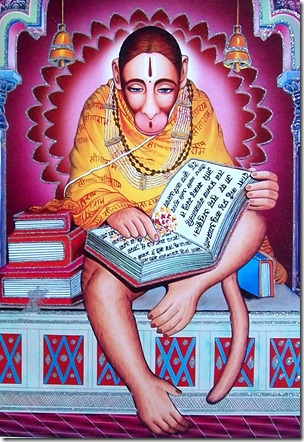It is said that India’s greatest contribution to the world was the discovery of the spiritual law of eternal values called Sanātana dharma (eternal law). Throughout the ages, India has given birth to highly evolved souls who have made it their life’s work to renew and revitalise the Sanātana dharma and make it accessible to genuine seekers.
The great Indian epics of Gods and demons are much more than ancient stories; to the sincere reader they reveal the great enduring wisdom taught by the highest rishis and sages. They reveal all aspects of man and God, providing signposts for right living, right action, and right thinking. When we read the great Indian epics, like the Mahabharata and the Ramayana, or the discourses in the Puranas and Upanishads, we accelerate our spiritual evolution. The rishis and sages gave us many paths to our own self-realisation, but it requires our individual hard efforts to come to the place of truth and understanding.
The sages and teachers who arrived later were determined to touch the lives of many, even those who had no leaning towards spirituality. They creatively brought the teachings to the minds of the average person, using these ancient stories to open their minds.
The sage Vyasa, who wrote the Mahabharata, was one of the greatest storytellers. He said that if we listen carefully to a story, we will never be the same. Eventually the words will burrow into our hearts and break down our self-constructed barriers to connecting with the divine. These stories have a compelling vitality that people never tire of hearing. All these stories have a moral value which could be compared to the fragrance of a beautiful flower.
We teach every child in India these stories from a very young age. A young mind has less difficulty in accepting these teachings, and more easily accepts the concept of the Supreme in the form of either an animal or human. For example, we find Ganesh depicted as a human with the head of an elephant, and Hanuman, who was a monkey.
Hanuman is one of the most loved figures in the Hindu pantheon of Gods called Kimpurushas, mystical beings which are half-human and half-animal. He symbolises selfless loyalty and devotion to his supreme deity, Sri Rama, who is the seventh reincarnation of Lord Vishnu, the epitome of human perfection. Hanuman’s strength came from simply repeating the name of Rama, the greatest mantra for this Kali Yuga period. If chanted with sincerity and devotion it is said to bring liberation from the chains of mortal life. In every temple of Rama around the world you will see a statue of Hanuman seated at his feet, bowing to him. When the Ramayana is recited, a seat is left vacant for Hanuman, as it is believed that Hanuman is always present with his beloved master when this story is recited.
The Western reader of this blog can be best introduced to the Ramayana by its comparisons with Homer’s Odyssey, another well-known epic, where the Greek hero Odysseus goes through many trials and tribulations before being reunited with his wife Penelope. Similarly, with Rama in the Ramayana, but he is on a divine quest. He restores the balance of good and evil on earth by overcoming the demon King Ravana. The characters in these stories are symbols of our own internal battles. For example, among the characters in the epic Ramayana, Ravana represents the monster we can become when we allow our immoral instincts full reign, when we are driven by our ego and desires. Rama by contrast represents the supreme glory of mankind and teaches us to behave with compassion and dignity, while fulfilling our responsibilities and duties for the greater good. He is the epitome of an outstanding leader, ruler, son, brother, and husband. His wife, Sita, is the embodiment of beauty, virtue, grace, devotion, and purity. Rama can be described as the sun or divine consciousness and Sita as the light of the sun’s rays on earth. As Sita says in Valmiki’s Ramayana, 5.21.15 “I am as inseparable from Rama as radiance is from the sun”. Hanuman is the son of the wind God, Vayu, and can be described as the breath that unites them. This is surprising to some who see him only as a mere monkey who would not be expected to have total self-control and discipline.
The depth of his devotion, the name of Rama is ever on his lips – his concentrated mind, courage and strength lead him to the impregnable kingdom of Lanka, Ravana’s abode and to finding Sita who has been imprisoned by the demon king. Without him, Rama could neither have rescued her nor slain the demon Ravana.
Hanuman is a symbol of the disciplined and devoted. He represents the potential in us all to conquer the unruly monkey mind that constantly jumps from one thought to another. His mind is fully focused on the presence of the Divine Self, the Lord of Life within his heart.
Hanuman in India is often fondly described as the world’s first Superman, especially by the younger generation, as he accomplishes difficult feats with amazing strength and is personally committed to the principles of courage and justice. In it all his humility shines through, which makes him appealing and admired as a Superhero!
All these unique characters who feature prominently in the Ramayana and other sacred texts are part of a most profound philosophical and spiritual allegory that can be appreciated on so many levels.
If you take the time to read these sacred texts, you will see that the path of devotion to a personal God is the common theme which runs through them. They tell of great incarnations of many Gods of the Hindu Pantheon, who represent the truth of life. They represent aspects of our enlightened mind. They reveal the dynamics of devotion and higher intelligence, of the soul and ego, of faith and ignorance, to bring us to the understanding of our true selves.
These exciting stories have endured many millennia and will survive many more to come.

